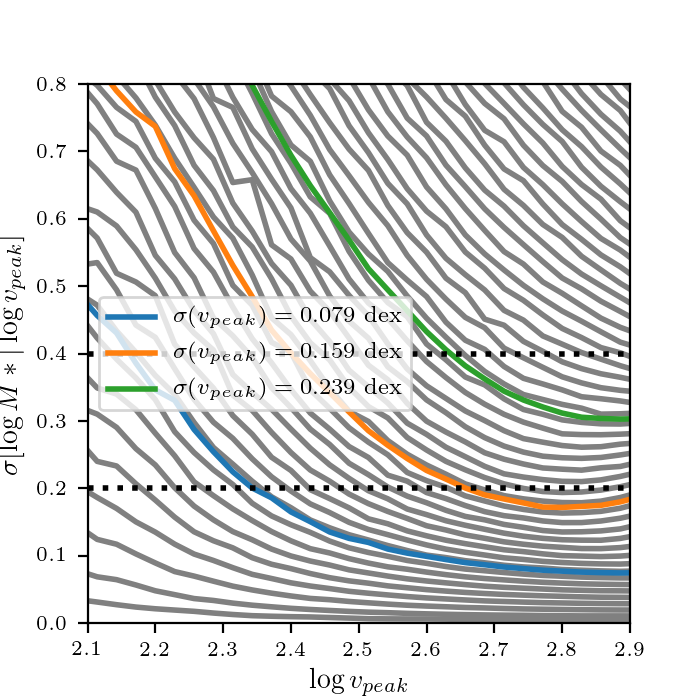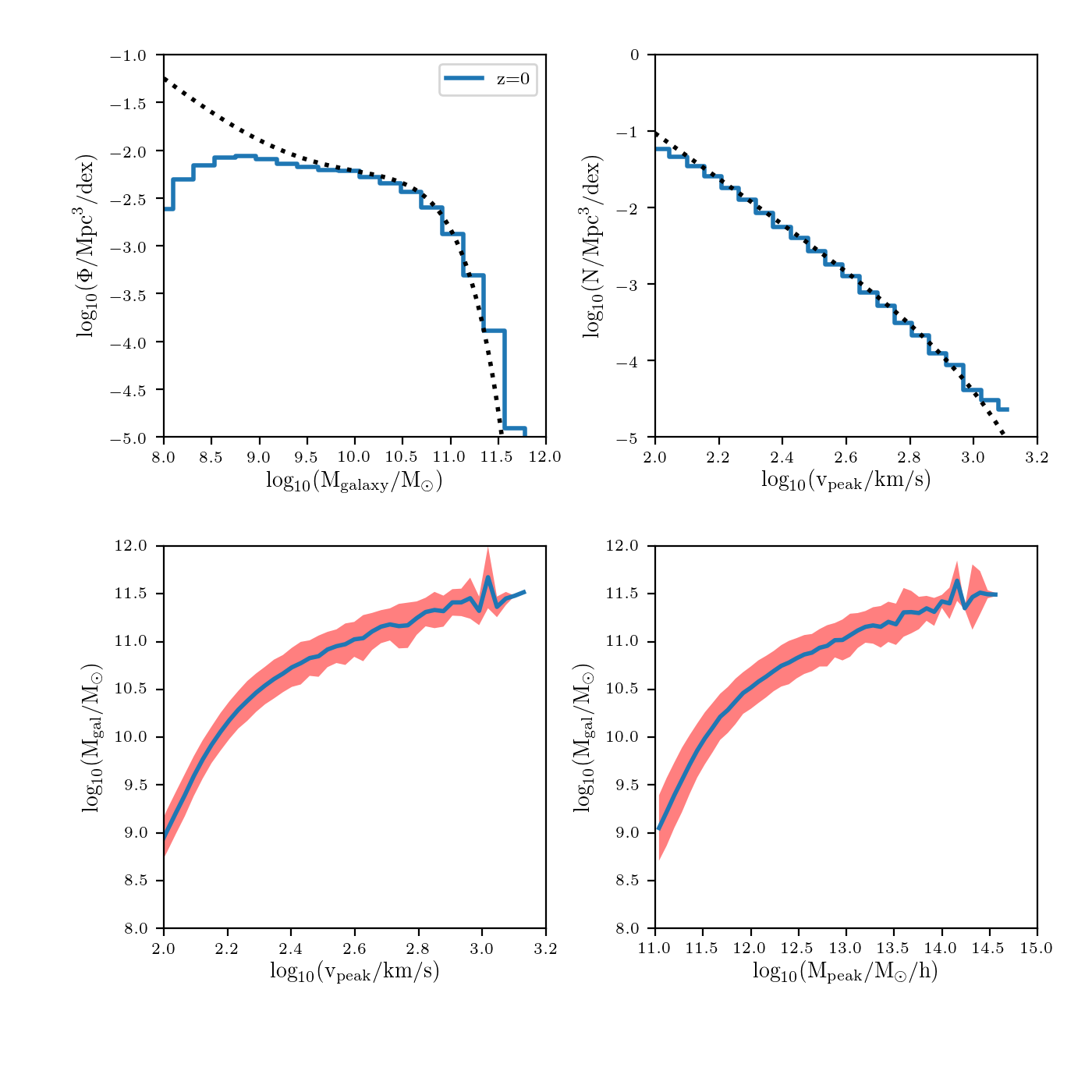Nicole Drakos
Research Blog
Welcome to my Research Blog.
This is mostly meant to document what I am working on for myself, and to communicate with my colleagues. It is likely filled with errors!
This project is maintained by ndrakos
Abundance Matching 512 Sims 2
This is a continuation of this post. I have performed abundance matching on the final snapshot of the \(512^3\) simulation, with the updated stellar mass functions, and with the scatter model working.
I am using the halo \(v_{\rm peak}\) function (HVF) from Comparat et al 2017. I flipped back and forth between using a parameterization or the simulation results. I think it works a lot better with a parameterization, but I will have to use our simulations to fit the parameterization for the range of redshifts we need.
Scatter Mapping
As outlined in this post, we will add scatter to \(v_{\rm peak}\) before the abundance matching step to get the required scatter in the galaxy masses \(M_{\rm gal}\).
Here is how the scatter \(\sigma[M_{\rm gal}]\) varies with the scatter in \(\sigma[v_{\rm peak}]\) as a function of \(v_{\rm peak}\):

To generate each of these curves, I first sampled \(10^7\) \(v_{\rm peak}\) values from the HVF, added a fixed scatter, then performed abundance matching. I then binned the resulting galaxy masses, \(M_{\rm gal}\), and measured the standard deviation in each bin.
Abundance Matching
Here are the results. The parameterized SMF and HVF are shown with dotted black lines. For this resolution, the simulations match the parameterizaiton at roughly \(v_{\rm peak} > 2.2\) and \(M_{\rm gal}>9.5\).

Next Steps
I am pretty happy with the set-up I have. The improvements I want to make are to (1) fit the HVF function from our simulations up to redshifts \(z>10\) and (2) rather than perform this on the snapshot, perform it on the halo lightcone in different redshift bins.